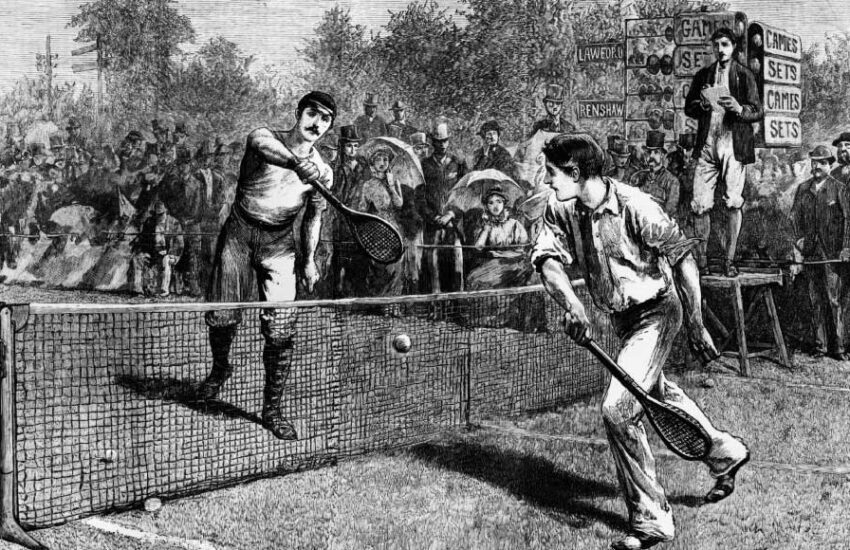The Development of Tennis through the Ages
Early Beginnings and Evolution
The game of tennis, as we recognize it today, has undergone significant transformation since its inception. Originating from a handball game played in 12th century France known as “jeu de paume,” tennis has evolved into a globally beloved sport. Initially, the game involved striking a ball with the palm of the hand, and it wasn’t until the 16th century that rackets were introduced, and the game began to take on a form more recognizable to contemporary audiences. During the 19th century, lawn tennis emerged in England as a structured and codified sport, largely thanks to Major Walter Clopton Wingfield. His innovations included a more formal set of rules and the introduction of a standardized court. This period marked the transition from an aristocratic pastime to a more organized and competitive sport.
The Grand Slam Tournaments
The modern era of tennis is defined by its four Grand Slam tournaments, each offering a unique challenge and a chance to witness the best players in the world compete at the highest level.
Australian Open: Played on hard courts in the heart of Melbourne, this tournament is known for its extreme weather conditions and vibrant atmosphere. It has the honor of being the first Grand Slam of the year, setting the stage for the tennis season.
French Open: Taking place at the historic Roland Garros stadium in Paris, the French Open is the only Grand Slam played on clay. The slow surface demands exceptional endurance and strategic play, making it a favorite among fans who appreciate the technical aspects of tennis.
Wimbledon: Arguably the most prestigious of the four, Wimbledon is steeped in tradition. From its grass courts to the all-white attire worn by players, every aspect of the tournament reflects its storied past. Wimbledon is synonymous with excellence and has been the stage for many historic moments in tennis.
US Open: Held in the bustling city of New York, the US Open is known for its electric energy and hard court battles. As the final Grand Slam of the year, it often serves as the deciding battleground for annual rankings and offers thrilling conclusions to the tennis season.
Iconic Matches and Legendary Players
Throughout its history, tennis has been graced by numerous iconic matches and legendary players who have left an indelible mark on the sport. Matches like the 2008 Wimbledon final between Roger Federer and Rafael Nadal are etched in the memories of tennis enthusiasts for their sheer intensity and display of skill. Players such as Serena Williams, with her powerful serve and unparalleled tenacity, and Roger Federer, known for his elegant style and record-breaking achievements, have set benchmarks for excellence. These athletes have inspired countless fans and aspiring players around the world, contributing to the global appeal of tennis.
The Impact of Technology and Modern Training
The evolution of tennis is also characterized by the integration of advanced technology and modern training methods. Innovations such as Hawk-Eye technology for line calls have added a new dimension to the sport, ensuring fairness and accuracy in officiating. Modern training techniques, nutritional plans, and psychological coaching have also played crucial roles in enhancing the performance of players. Additionally, the design and materials of tennis equipment, including rackets and balls, have seen significant advancements, allowing for greater precision and power. These developments have helped players push the boundaries of what is possible on the court, leading to faster, more dynamic matches.
Tennis and Its Cultural Significance
Beyond the courts, tennis has had a profound cultural impact. It is a sport that embodies principles of discipline, sportsmanship, and perseverance. Events like Wimbledon and the US Open are not just sporting occasions but cultural phenomena that attract celebrities, fashion icons, and millions of viewers worldwide. Tennis has also played a role in social change, breaking down barriers and promoting diversity. Figures like Arthur Ashe and Althea Gibson paved the way for greater inclusion in the sport, inspiring future generations of players from diverse backgrounds.
The Globalization of Tennis
In the modern era, tennis has truly become a global sport, with professional tournaments held in virtually every corner of the world. The ATP and WTA tours include events in countries ranging from China to Brazil, showcasing the sport’s widespread appeal. This globalization has not only expanded the fan base but also brought diverse playing styles and talents to the forefront. Players from nations without a strong tennis tradition, such as Japan’s Naomi Osaka and China’s Li Na, have risen to prominence, demonstrating the sport’s universal accessibility and appeal.
Technological Advancements and Player Health
The integration of technology in tennis extends beyond the game itself. Wearable technology, data analytics, and biofeedback systems are now integral to player training and performance enhancement. These tools help in monitoring physical health, optimizing training regimens, and preventing injuries. For instance, smart wearables can track a player’s biometrics during matches, providing real-time data that coaches use to make tactical decisions and adjust training loads.
The focus on player health and longevity has also led to advancements in sports medicine and rehabilitation techniques. Innovations such as cryotherapy, hydrotherapy, and advanced physiotherapy have become standard practice, enabling players to recover faster and extend their careers. This emphasis on health and technology ensures that athletes can perform at their peak for longer periods, contributing to the high level of competition seen in modern tennis.
Looking Forward: The Future of Tennis
As tennis continues to evolve, several trends are likely to shape its future. The ongoing development of virtual reality (VR) and augmented reality (AR) technologies promises to revolutionize both training methods and fan engagement. VR can provide immersive training environments where players can practice without the physical constraints of a traditional court. For fans, AR can enhance the viewing experience by overlaying real-time statistics and interactive features during live matches.
Moreover, the sport’s governing bodies are increasingly focusing on sustainability, implementing eco-friendly practices at tournaments and in the production of equipment. Initiatives such as reducing plastic waste, using renewable energy sources, and promoting sustainable transportation options for players and fans are becoming more prevalent. These efforts not only reflect a growing environmental consciousness but also ensure that tennis can be enjoyed by future generations.



